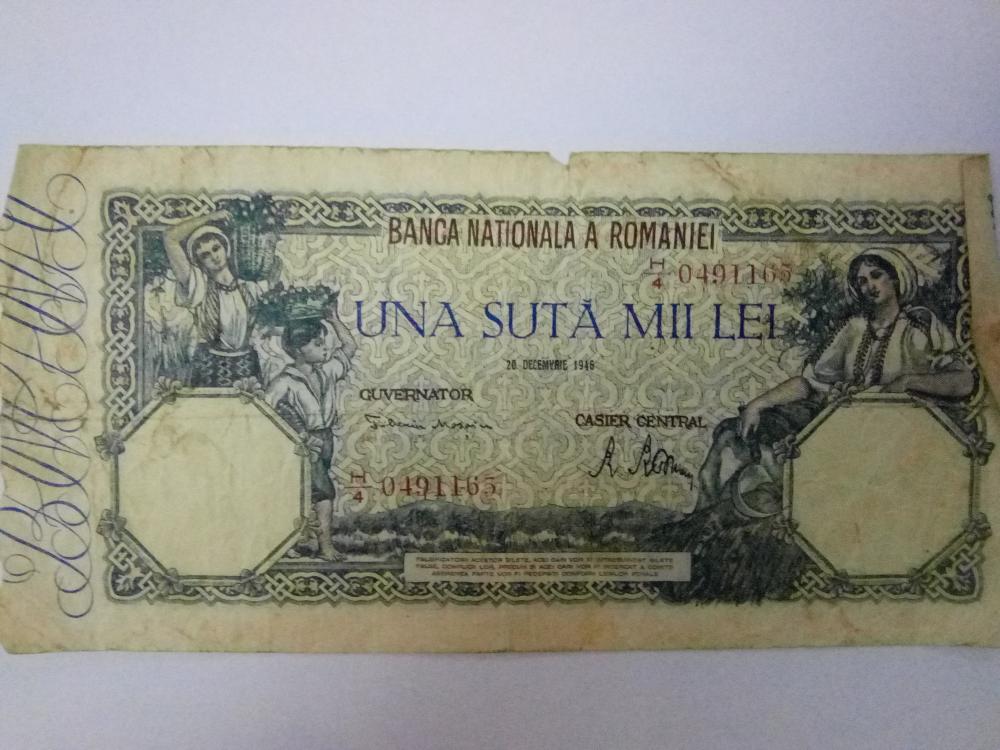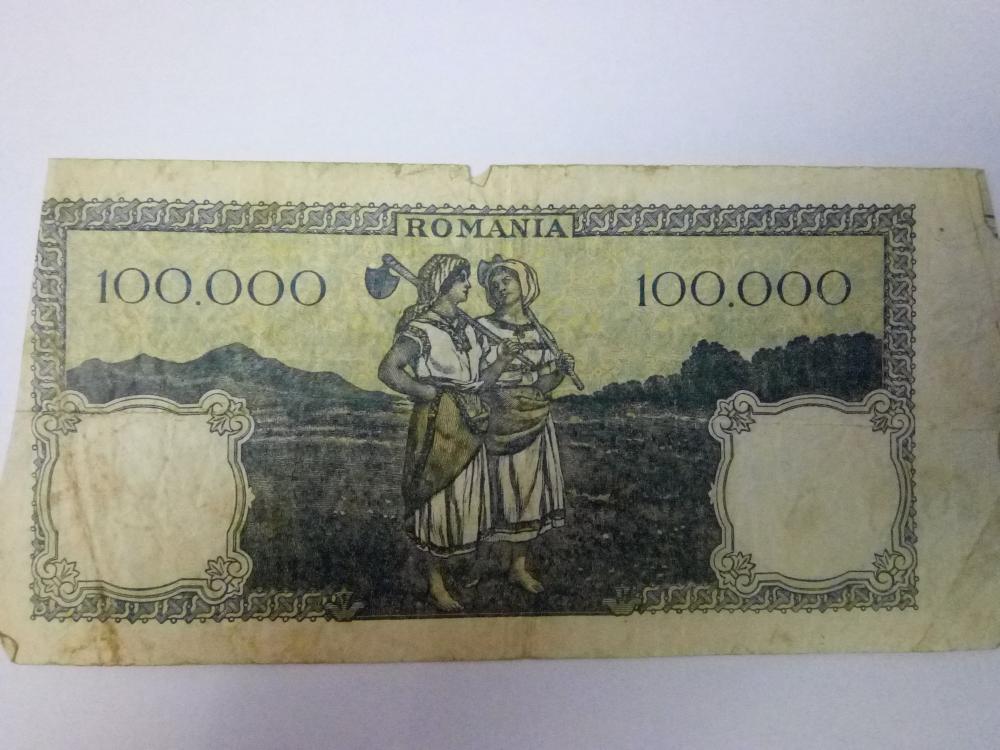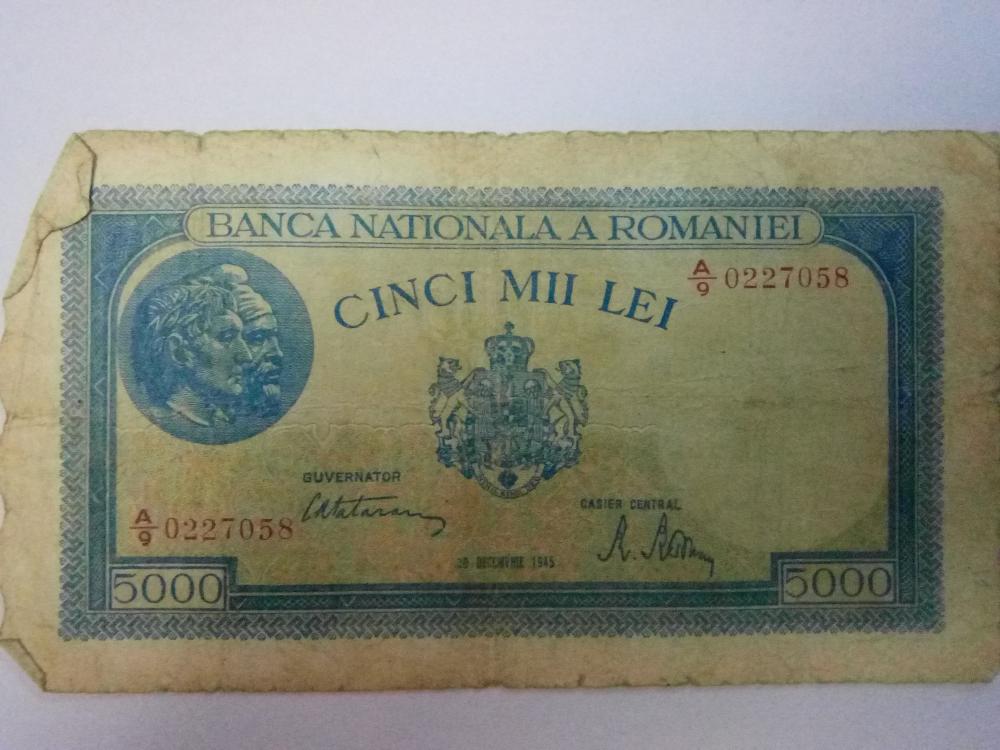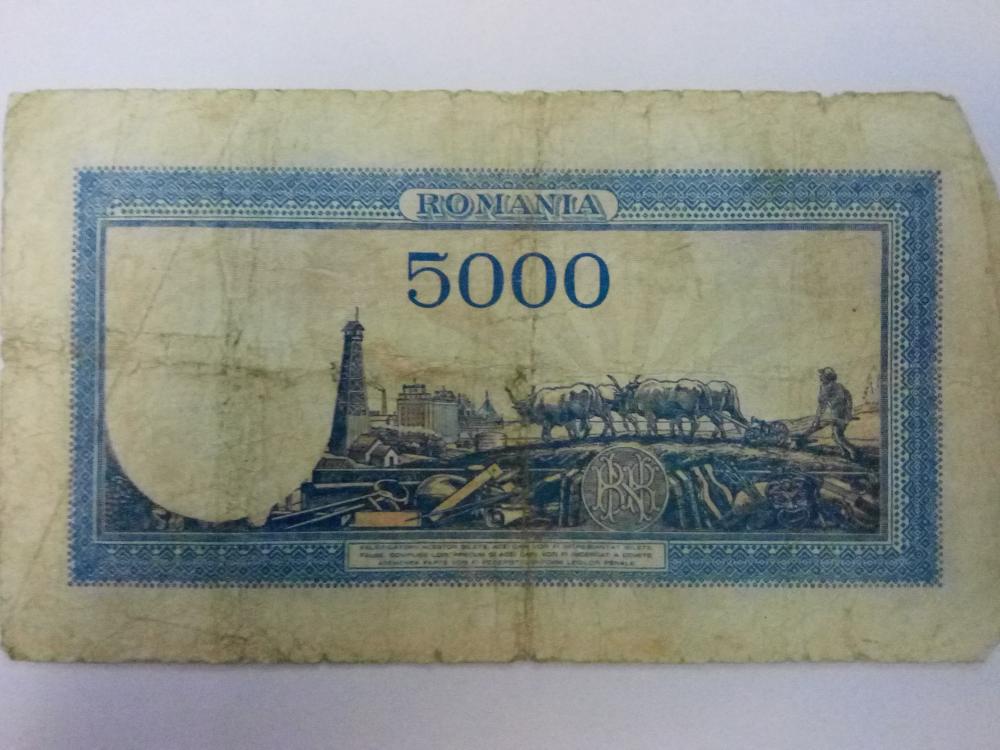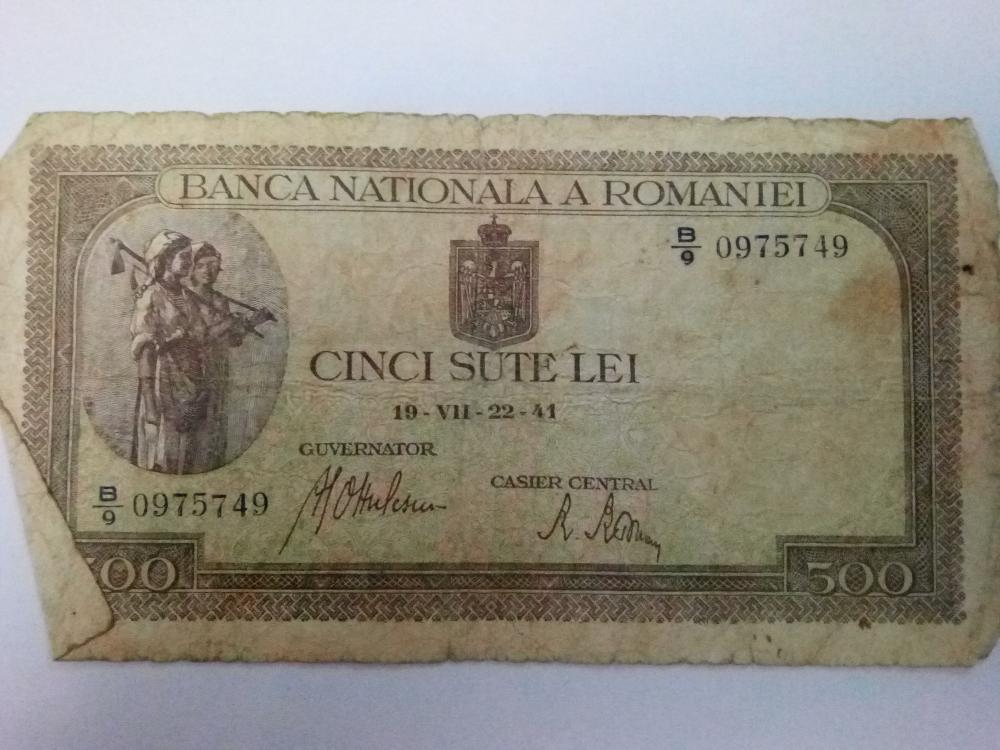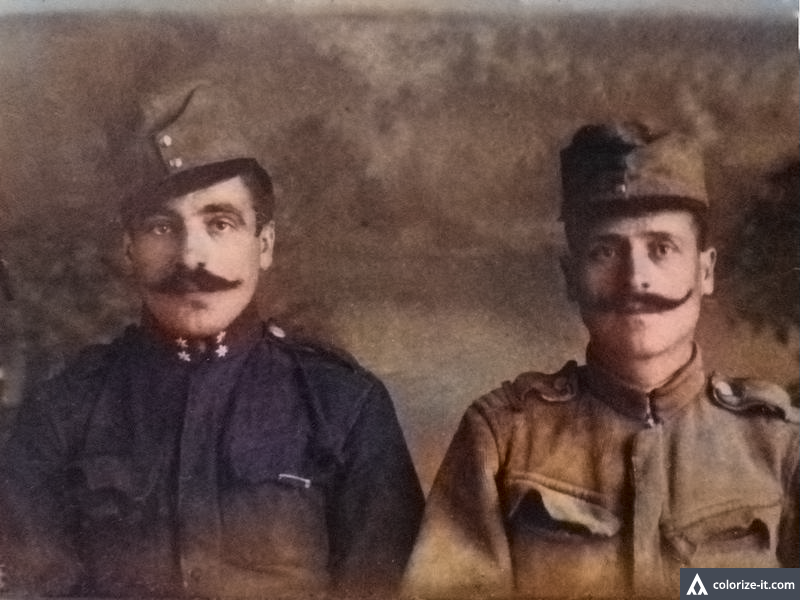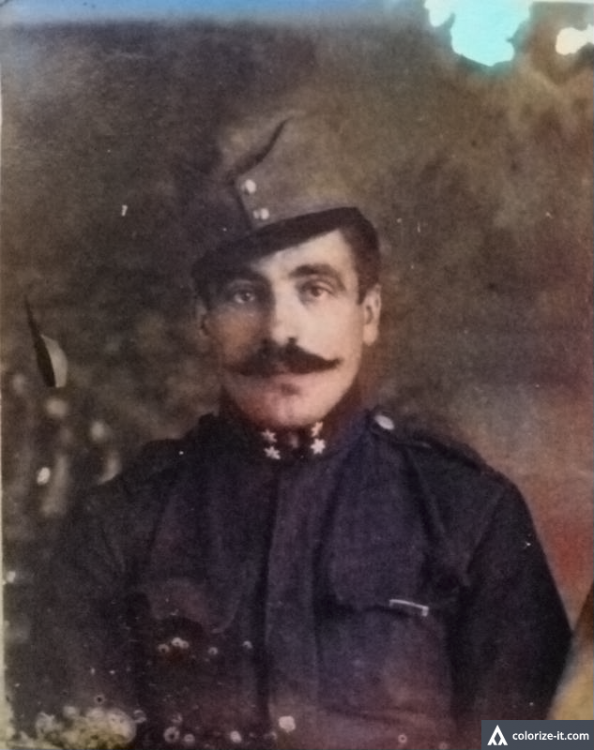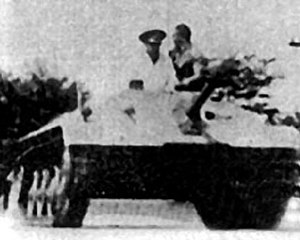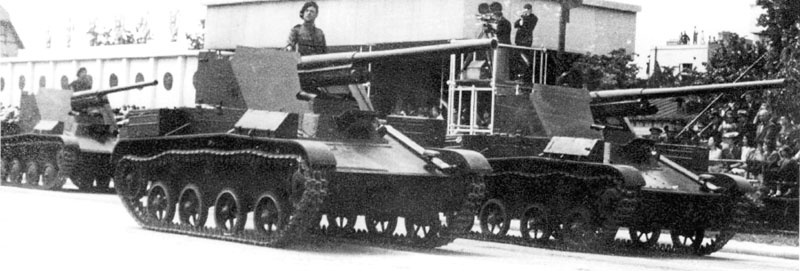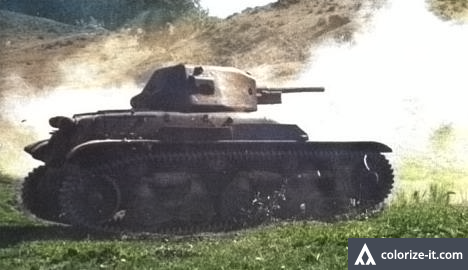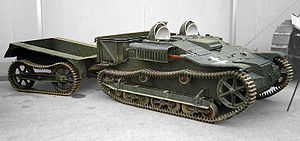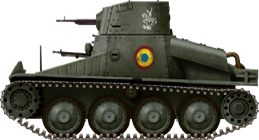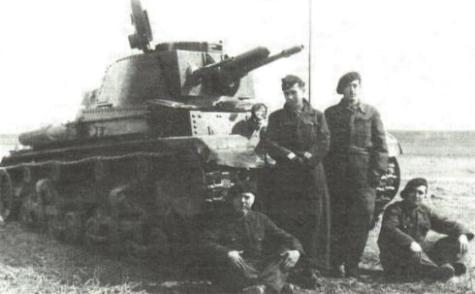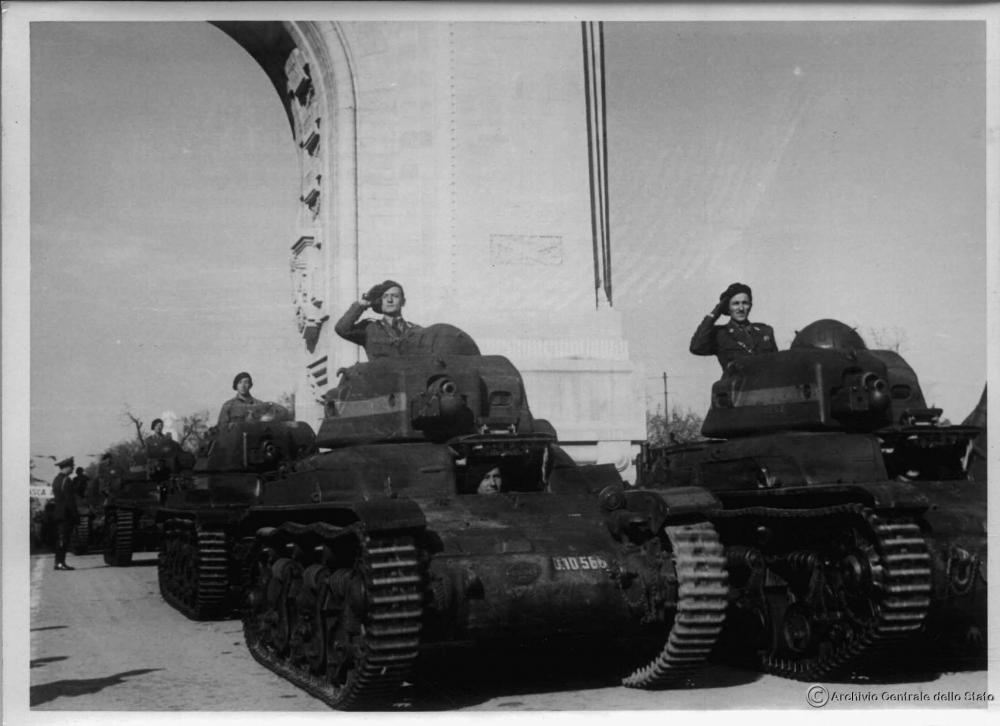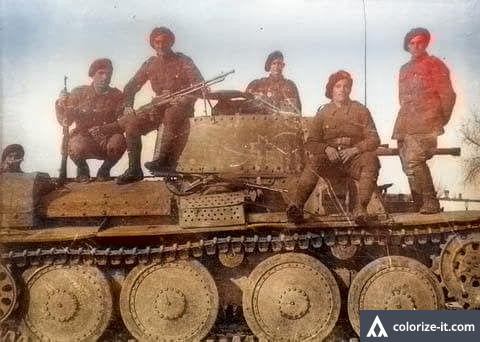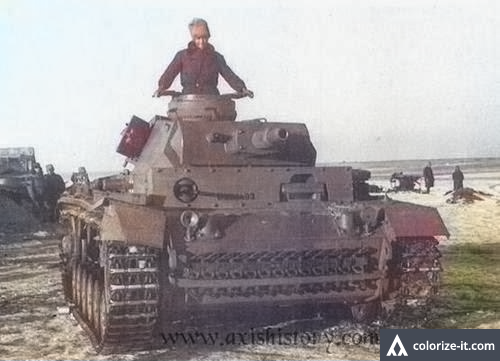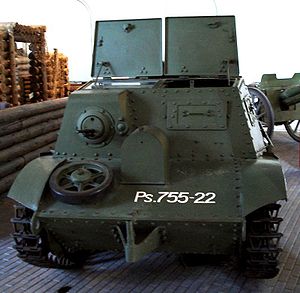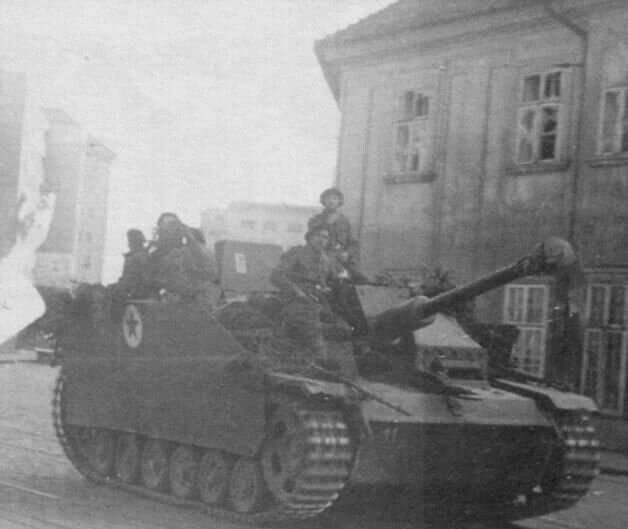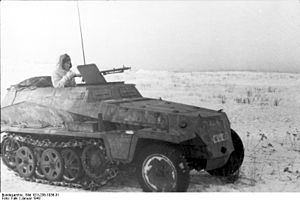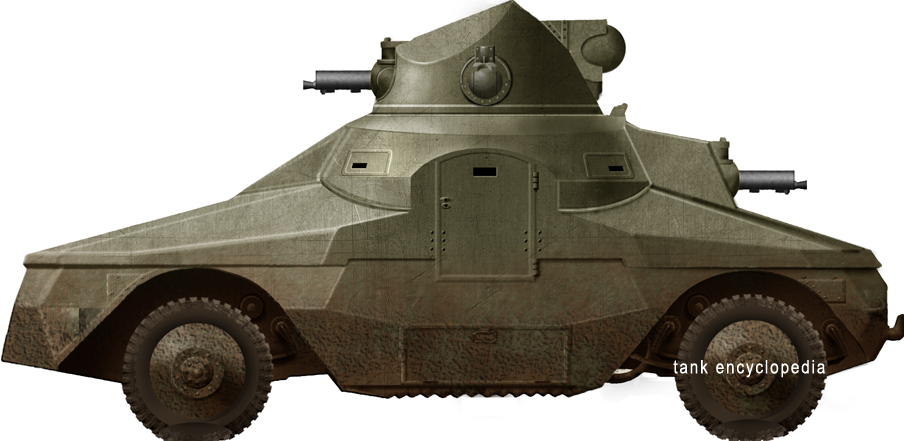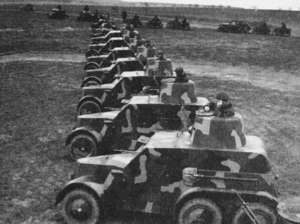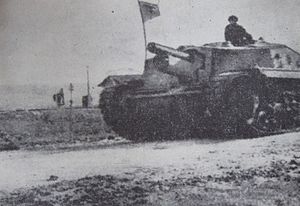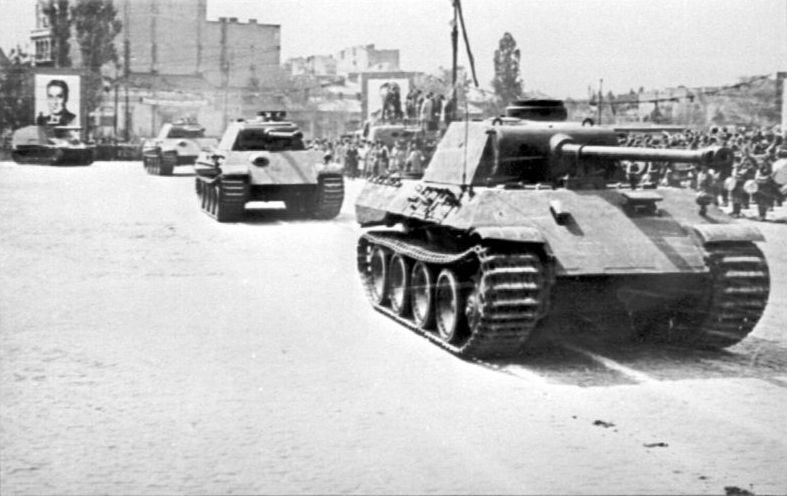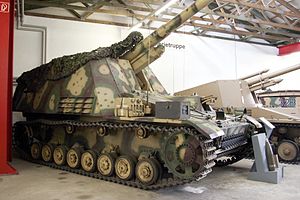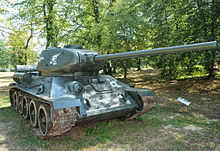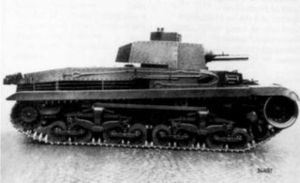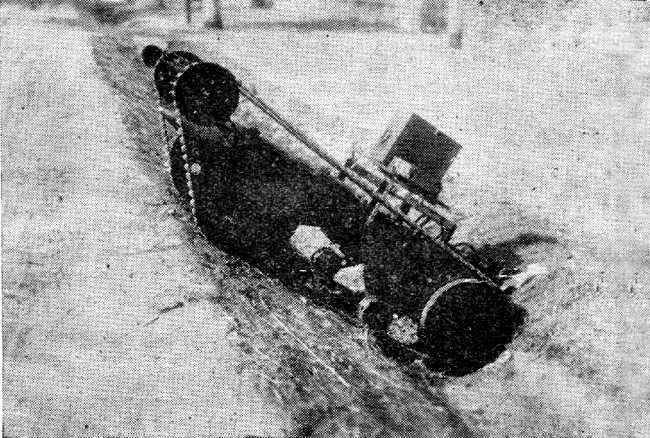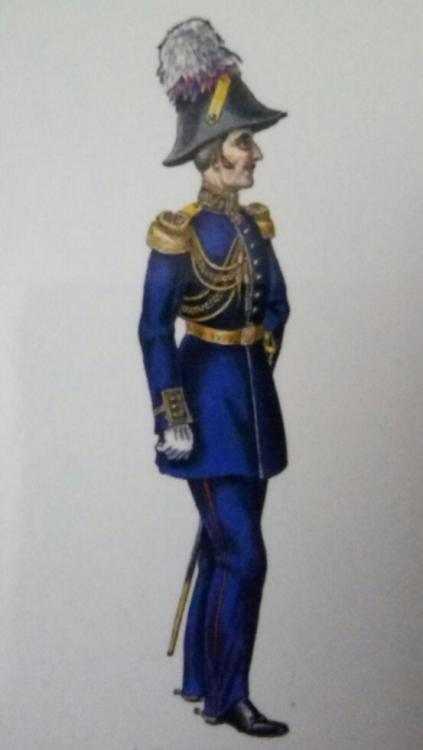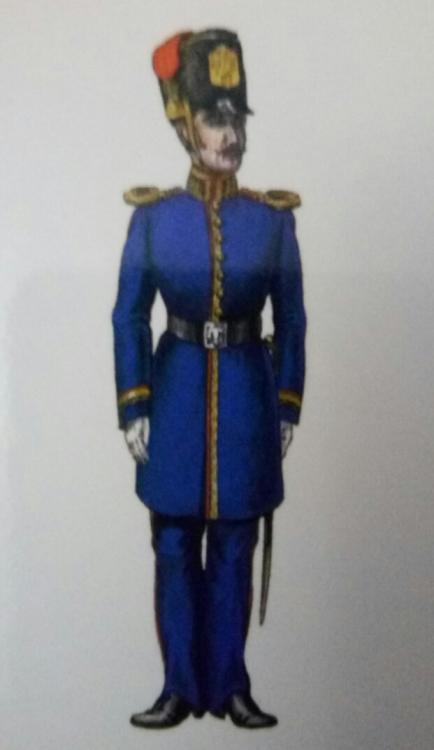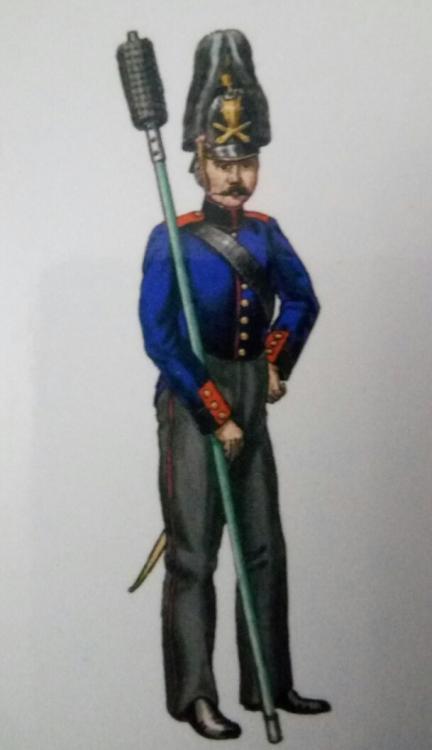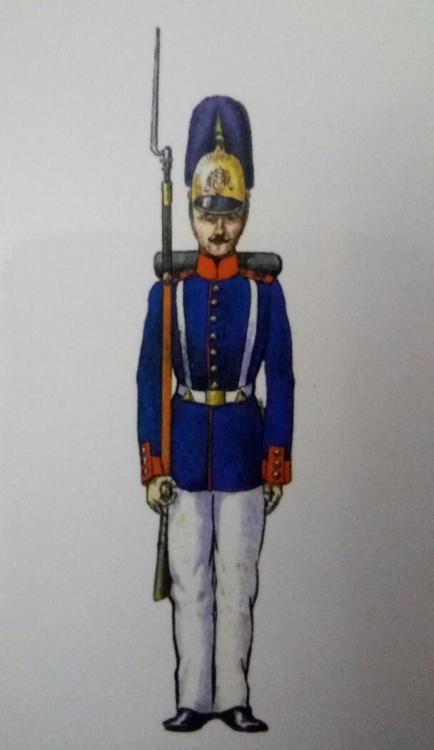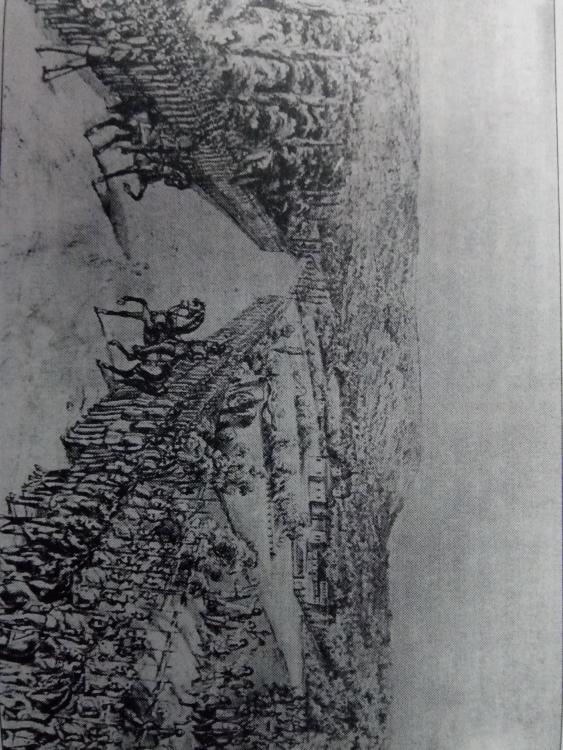
Morar Andrei
Active Contributor-
Posts
264 -
Joined
-
Last visited
Content Type
Profiles
Forums
Blogs
Gallery
Events
Store
Everything posted by Morar Andrei
-
My personal collection of banknotes from the Kindgom of Romania. Initially, this collection was not realised in purpose, but it was something like a gift left from my grandparents. They are dated between 1941 and 1947, representing the Second World War era and the first years after, before the rise of the communism. Hope to enjoy! Every banknote is on both sides. Five thousant lei from 1945 500 lei from 1941:
-
23.Honvéd-Infanterie-Division (Division captured at Przemyśl) Commanders: Arpád Tamásy von Fogaras - Aug 14 - Sept 14 Heinrich Daempf - Sept 14 - Mar 15 Arpád Tamásy von Fogaras Order of battle of the 3rd Army August 1914: - Army: 3rd Army - XI Corps: 30th Infantry Division - XIV Corps: 3rd Infantry Division, 8th Infantry Division, 44th Landwehr Infantry Division - (Subordonated to HQ): 41st Honved Infantry Division, 23rd Honved Infantry Division, 4th Cavalry Division, 2nd Cavalry Division, 11th Honoved Cavalry Division Did the 23rd Honved really fall prisoner at Przemyśl?
-
Landkreuzer P.1000 "Ratte" and P.1500 "Monster"
Morar Andrei posted a blog entry in Military history of Romania
This time, I want to get simething a bit different from the Romanian military history, and discuss about its allued from the first part of WW2, Germany and its tanks. Not any german tanks, but the huge projects P.1000 "Ratte" (the Rat) and P.1500 "Monster". Hitler, being a veteran of the Great War, had an obsession for oversized weapons, such as the Maus super-heavy tank, "Gustav" and "Dora" 800mm supercanons, the "Flack Towers" and many others. From this obsession were also born the projects for P1000 and P1500. Landkreuzer P.1000 "Ratte" The Ratte is known for its enormous size: it would have weighed 1,000 tonnes, five times the weight of the Panzer VIII Maus. The divided weight of the Ratte included 300 tonnes of armament (the total weight of the guns themselves was 100 tonnes, so turret armour would have weighed 200 tonnes), 200 tonnes of armour and frame and 100 tonnes of track and automotive components, while remaining weight would be distributed to miscellaneous features. It was planned to be 35 m (115 ft) long (39 metres (128 ft) when including naval guns), 11 m (36 ft) high and 14 m (46 ft) wide. To compensate for its immense weight, the Ratte would have been equipped with three 1.2 m (3 ft 11 in) wide and 21 m (69 ft) long treads on each side with a total tread width of 7.2 m (23 ft 7 in). This would help stability and weight distribution, but the vehicle's sheer mass would have destroyed roads and rendered bridge crossings next to impossible. It was expected that its height, and its ground clearance of 2 m (6.6 ft), would have allowed it to ford most rivers with relative ease, thus eliminating the need for bridge crossings. Planned propulsion was by two MANV12Z32/44 24-cylinder marine diesel enginesof 6,300 kW (8,400 hp) each (as used in U-boats) or eight Daimler-Benz MB 501 20-cylinder marine diesel engines of 1,500 kW (2,000 hp) each (as used in E-boats) to achieve the 12,000 kW (16,000 hp) needed to move this tank. The engines were to be provided with snorkels, also like those used by German submarines. The snorkels were designed to provide a way for oxygen to reach the engine, even during amphibious operations passing through deep water. The Ratte's primary weapon would have been a dual 280 mm SK C/28 gun turret. This was the same turret that was used on the German capital ship Gneisenau but modified by removing one of the guns and its associated loading mechanism. Removing the third gun allowed extra accommodation of ammunition, and reduced the total weight of the tank by 50 tonnes. The guns used for the Ratte would have fired ammunition developed for other naval guns. It also included armour-piercing rounds with 8.1 kg (18 lb) of explosive filler, and high-explosive rounds with 17.1 kg (38 lb) of explosive filler. Further armament was to consist of a 128 mm anti-tank gun of the type used in the Jagdtiger or Maus, two 15 mm Mauser MG 151/15 autocannons, and eight 20 mm Flak 38 anti-aircraft guns, probably with at least four of them as a Flakvierling quad mount. The 128 mm anti-tank gun's precise location on the Ratte is a point of contention among historians, most believing that it would have been mounted within the primary turret, with some others thinking a smaller secondary turret at the rear of the Ratte more logical. Some concept drawings exist to suggest a flexible mount on the glacis plate. The tank was to be provided with a vehicle bay that could hold two BMW R12 motorcycles for scouting, and several smaller storage rooms, a compact infirmary area, and a self-contained lavatory system. The large size and weight would have rendered the tank unable to cross bridges at the risk of collapsing them, and travelling on roads would soon destroy them. Though its top intended speed was 40 kilometres per hour, its huge size and high visibility would have made it extremely vulnerable to aerial bombardment and artillery fire. Its great size would also have made it nearly impossible to transport—no existing railway or train car could bear its weight and its width was too great for existing tunnels. Landkreuzer P.1500 "Monster" This "land cruiser" was a self-propelled platform for the 800mm Schwerer Gustavartillery piece also made by Krupp—the heaviest artillery weapon ever constructed by shell weight and total gun weight, and the largest rifled cannon by calibre. This gun fired a 7-tonne projectile up to 37 km (23 miles) and was designed for use against heavily fortified targets. The Landkreuzer P. 1500 Monster was to be 42 m (138 ft) long, weighing 1500 tonnes, with a 250 mm hull front armor, four MAN U-boat (submarine) marine diesel engines, and an operating crew of over 100 men. The main armament was to be an 800 mm Dora/Schwerer Gustav K (E) gun, and with a secondary armament of two 150 mm sFH 18/1 L/30 howitzers and multiple 15 mm MG 151/15 autocannons. The main armament could have been mounted without a rotating turret, making the vehicle a self-propelled gunrather than a tank. Such a configuration would have allowed the P. 1500 to operate in a similar manner to the original 800mm railroad gun and Karl 600mm self-propelled mortars, launching shells without engaging the enemy with direct fire. Development of the Panzer VIII Maus had highlighted significant problems associated with very large vehicles, such as their destruction of roads/rails, their inability to use bridges and the difficulty of strategic transportation by road or rail. The bigger the vehicle, the bigger these problems became. Propulsion had also proved problematic in the development of the Maus: The prototype had failed to meet its specified speed requirements which meant that even larger vehicles such as the P. 1500 were likely to be slow-moving. -
Trying to recreate an uniform
Morar Andrei replied to Morar Andrei's topic in Austro-Hungarian Empire
I got it. Thank yiu again and sorry for any misunderstanding from my side... -
Trying to recreate an uniform
Morar Andrei replied to Morar Andrei's topic in Austro-Hungarian Empire
Someone else suggested that this might be a wartime uniform, due to the simplicity (the dark blue one). The guy wearing it was a Transylvanian who fought during the Great War, from the modern Brasov County. Anything that might help about the material of the uniform or any colour to use fir recreating this one? Thank you anyway! -
I'm trying to recreate a Hoved corporal uniform, most probably the 1908 model, similar to the one from my photos. I want to know what is it composed from? What materials should I use? What colours? Thank you very much! Hope to show you when will be done... Here is the photo I'm using for:
-
Romanian cavalry against german machineguns
Morar Andrei replied to Morar Andrei's topic in Central & Eastern European States
I found out more exactly which battle was this. It was the battle of Robănești, also known as "the charge of Robănești". This is what happened: On 23 November 1916 at 6 a.m. under dense fog, captain Alexandru Filitti, commander of the 3rd cavalry squadron is called from Lăcrița Mare where his squadron was stationed to Popânzălești to join the main forces of the Brigade. At 7 a.m. the entire Brigade starts advancing towards Bojoiu, Robănești and Pielești. At 8 a.m. the Romanian vanguard, including part of the 9th Roșiori regiment and a squadron of machine guns encounters the German lines east of Bojoiu and its advance is stopped. Receiving reinforcements, the Romanian troops attack and after a strong exchange of fire the Germans retreat and the Romanians occupy the village. In the meantime, two battalions of the 11th Bavarian Division, reinforced by machine-gun units and artillery occupied a front line form Pârșani to Robăneștii de Sus. At 8.15 a.m. the 9th Roșiori regiment is ordered to attack the German left wing located in the village Pârșani behind the Pârșani forest. The regiment advances west of the village of Bojoiu, towards Lăcrița Mare along the valley of the Vlașca River being kept out of sight by the Robănești hills. Shortly afterwards, at 8:30 a.m. the rest of the vanguard of the brigade continues to advance, crossing Robăneștii de Jos, advancing despite some German attacks till about 8.45 a,m. where it encounters strong enemy fire. The Romanians decide to attack the German positions. The 4th Roșiori Regiment is ordered to carry out the frontal attack and consequently dismounts. The fourth squadron takes position preparing for the attack along the Robăneștii de Jos - Pârșani road. On the right flank, three platoons of the third squadron take position covering the terrain to the Teslui River. To the left another platoon of the same squadron takes position, reinforced by the machine-gun unit. The first squadron of the regiment is kept as reserve. A unit of the horse-drawn artillery, under the command of captain Vasilescu, is also positioned on the left side. In the mean time, the 9th Roșiori regiment had stopped near some straw stacks, at about 800 meters south-west of the Pârșani forest. Lieutenant Emil Mora, who had scouted the area, reported to Colonel Călinescu that he had identified the position of the German artillery and could indicate the line along which the Romanian cavalry could charge that position. However the Romanians had no information about the position of the other German troops. Colonel Călinescu accepted the advice and ordered his second in command to select the squadron for the charge. At this moment, captain Alexandru Filitti volunteered to lead his squadron to charge the German positions. Having lost some of its men in previous combats, the squadron was only 110 swords strong, and all other officers besides its commander had been sent on various missions. Captain Filitti decided to have two platoons, under the command of sergeant Ion Bălașa, advance northwards, under cover of a small hill and then to attack the flank of the artillery position. Captain Filitti decides to lead himself the main charge. Lieutenant Emil Mora, who was in charge of the supplied of the regiment and lieutenant Iuliu Roșca aide-de-camp of the regiment commander volunteer to take command of one of two platoons. Another volunteer is 67-year-old sergeant Gheorghe Donici who had participated in the Romanian War of Independence. When the charge approached the German positions, the Germans hastily pulled back their cannons. The entire 3rd squadron continued its charge to pursue the retreating artillery. In doing this they came under the fire of the German machine-guns which had been hidden behind the haystacks and the fire of the German infantry which had been hidden in trenches along the Craiova-Balș road. Captain Filitti was wounded by fire but continued his charge until his horse was killed by a hand-grenade and he himself was heavily wounded and taken prisoner. The result of the charge was the total annihilation of the 3rd squadron. Only two officers and 16 soldiers survived and were taken prisoners. The losses amounted to one officer and 94 soldiers. -
1st of December, National Day of Romania
Morar Andrei posted a blog entry in Military history of Romania
Yesterday, there was 1st of December, and all the Romanians celebrate this year 99 years since the Great Reunification of 1918. But the national day was not the same in the last 150 years, having different dates. Romania's national day ran from 1866 to 1947 on May 10, then from 1948 to 1989 on 23 August. By law no. 10 of 31 July 1990, promulgated by President Ion Iliescu and published in the Official Gazette no. 95 of 1 August 1990, December 1 was adopted as a national day and a public holiday in Romania. This provision was resumed by the Romanian Constitution of 1991, Article 12, paragraph 2. The anti-Communist opposition in Romania advocated in 1990 for the adoption of 22 December as a national holiday, a fact recorded in the transcripts of the parliamentary debates.In 1990, after the 1989 anti-communist revolution, the NSF-dominated parliament refused the opposition's proposal to adopt December 22 as the national holiday of Romania. On the background of the inter-ethnic confrontations in Târgu Mureş in March 1990 and the mining of 13-15 June 1990, the Romanian Parliament adopted on July 31, 1990 the Law no. 10 of 1990, which repealed the Decision of the Council of Ministers no. 903 of August 18, 1949, declaring August 23 as a national holiday and proclaiming the day of December 1 as the national holiday. Law 10 of 1990 does not specify the meaning or reason for the election of December 1 as the national day of Romania. The law passed in 1990 by the FSN-dominated parliament and promulgated by Ion Iliescu aimed at combating the sympathies related to the monarchical tradition of Romania with the historic national feast on 10 May, as well as countering the demand for anticommunist opposition to adopt the day December 22 as a national holiday. The election of December 1, though unexplained, made reference to the unification of Transylvania, Banat, Crisana and Maramures with Romania in 1918, and the Alba Iulia Proclamation, which took place on 1 December 1918. The election of this day as a national holiday Romania was seen as an affront to the Hungarian minority in Romania, for which the day of December 1 meant a political loss. The first national day of December 1, whose central festivities took place in 1990 in Alba Iulia, was marked by political polarization, the speech of Corneliu Coposu, the then leader of the anticommunist objective, being interrupted several times by booze Petre Roman, the then prime minister, was pleased with the repeated interruption of the opposition leader's speech, which made President Ion Iliescu give him a sign to stop, gesture filmed and broadcast widely by the media.Historian Neagu Djuvara showed in an interview with TVR in 2011 that the election of December 1 by the Iliescu regime was a conjectural one, explaining that on December 1, 1918, only Transylvania and Banat were united with Romania, while the other the historical provinces, namely Bessarabia and Bucovina, were united at different dates. -
In the 1978 Romanian war movie "Ecaterina Teodoroiu", there is a scene after she escapes from the Germans when the Romanians are involved in destroying a German rail artillery piece that was threatening Târgu Jiu. Same story appears in our 4th class history books at school, being cosidered the source of her nickname "The Jiu Heroine", but there is no mention about this episode in any of her official biography, also being no mention about any German or Austro-Hungarian rail artillery used on this specific section of the front, neither in 1916 or 1917. Unfortunately, I can not remember the minute in the movie where that appears, but I want to know how real is that episode, shredded in mistery and Communist propaganda?
-
Few know of its existence, but Bucharest has an extraordinary architectural and historical treasure. It is the fortification network around the capital (18 forts and 18 batteries) built between 1884-1903 by King Carol I, under the direction of the Belgian general Henri Alexis Brialmont, whose goal is to defend the capital in case of war. They were supposed to give a strong defence agains any attack from the north, but the southern flank of this defence ring was less fortified. For the construction of these buildings, which practically surrounds the Capital, adjacent to the Ring Road, at that time lands were expropriated and 111 million lei was paid from the state treasury. General Brialmont also built the fortifications around Amsterdam and the fortifications from Antwerp and Liege - Belgium, known all over the world. Unfortunately, the forts around Bucharest are on the brink and are not accessible to the public. The fortification network around the capital was built by King Carol I under the direction of Belgian General Henri Alexis Bialmont. It consists of 18 batteries and 18 interstellar forts: a fort, a battery, a fort, a battery, about 2 km away, and its purpose was defense. "Between 1883 and 1903, the fortifications under the guidance of the Belgian general Henri Alexis Brialmont were made, after which they began building their buildings. The Otopeni, Jilava, Mogosoaia and Chitila Forts were built in the first ten years. were built as those in the North of the Capital, according to the project. As budget constraints have been modified to fit the allocated budget. The purpose was to protect the capital. It is 18 forts and 18 batteries, they are united by some tunnels. When the war started in 1914, and Romania entered the war in 1916, they were emptied of weapons because there was no funds, and in each battery / fort could enter about 100 soldiers and were equipped with cannons. When the German army entered Bucharest , they thought it would be a hard fight, we had this system of fortifications, but they entered "quiet." Originally it was foreseen that the fortification network will cost 85 million lei, but finally they cost at 111 million lei. Very large amounts have also been paid for the expropriation of the land on which these fortifications were built. A royal decree was given." Currently, the fortification network has several owners: the military, various ministries, local councils, the city hall, private companies. Some of the forts are in good condition, others are flooded or in an advanced state of degradation. "Now it is difficult to access them, some being flooded, some being military units. Some of the military units have been decommissioned, and now there is only a guard. Some of them were warehouses, in other companies, shooting polygons, "explains Alexandrina Nita in in article from 2014. The fortification system is currently in a process of irreversible damage. Today there are 17 forts and 13 intermediate batteries out of the 36 constructions, the rest being destroyed due to accidental explosions of ammunition depots. Of the remaining artillery shells and batteries, most are degraded, abandoned and flooded. Many are on the territory of some military units but have not been used anymore. Some have hosted or housed mushrooms or pickles or are abandoned, hidden under vegetation. In order to protect them, especially on private property, by real estate sharks, and in order to be able to make a rehabilitation project, since 2004, the County Directorate started the procedure of classification on the historical monuments list. Initially three types of forts were designed, of varying size, but the innovations and adaptations during the final plans led to a diversification of the fortifications. Thus, according to structure, individual purpose and particularities, forts and batteries are classified into the following types: Fort type 1 Representatives: 1 Chitila and 3 Otopeni Structure: pentagonal Category: Big Forces, from Brialmont's original plans Fort type 2 Representatives: 2 Mogosoaia and 13 Jilava Structure: pentagonal modified versus type 1 Category: Big Forces, from Brialmont's original plans Fort type 3 Representatives: 4 Tunari, 7 Pantelimon - 18 Chiajna, total 12. Structure: trapezoidal Category: Forces adapted from General Brialmont's plans to a new type of ammunition. Fort type 4 (water) Representative: 5 Stefanesti Structure: pentagonal Category: Private variant of type 2, surrounded by 3 pieces of water ditches Fort type 2 modified (unique) Representative: 6 Smoke Structure: pentagonal modified versus type 1 Category: Variant modified during construction of type 2 Intermediate batteries Type 1: 1-2 Chitila, 4-5 Tunari, 5-6 Ştefanesti, 6-7 Smoke and 7-8 Pantelimon Type 2: 13-14 Jilava, 14-15 Broscărei Type 3: 2-3 Mogoşoaia, 8-9 Cernica, 9-10 Cătelu, 15-16 Magurele, 16-17 Bragadiru, 17-18 Domneşti, 18-1 Chiajna Type 4: 3-4 Otopeni Mixed Type A: 12-13 Berceni Mixed Type B: 10-11 Leordeni, 11-12 Popeşti
-
The Romanian Legion from Italy
Morar Andrei replied to Morar Andrei's topic in Southern European & Balkan States
Anything about this famous unit? -
Romania and The Great War - What happened
Morar Andrei posted a blog entry in Military history of Romania
Many times forgotten or remembered only for the catastrophic campaign of 1916, Romania was involved for a longer time than any would think. If we add the romanians that fought in the Austro-Hungarian army and the romanian legions from France and Italy, we can even say that they fought for most of the war. When the war broke out in 1914, Romania, under King Carol I (member of the Hohezollen-Sigmaringen family, close to the german imperial family), was part of a secret defensive treaty signed in 1883 with the German Empire and Austro-Hungarian Empire, in case of any of these powers was attacked. But, as the Austria-Hungary was the one that invaded Serbia, Romania was thinking if they should join the Central Powers or remain neutral. Eventually, after the Crown Council of Sinaia, the king decided the neutrality of the nation. In October 1914, Carol I died, being succeded at throne by his nephew Ferdinand, who was married to Mary/Maria of Windsor, who was a pro-Entente activist. The population, such as the Gouvern, was splitted betwen pro-germans and pro-french, leading to many arguings during the neutrality. In August 1916, after secret negociations with France, Romania finally joined the Entente. On the night between 27 and 28th of August, after a war declaration was delivered to the austrian embassy, the romanian troops entered in Transylvania, according to "Ipoteza Z" war plan, meeting initially little resistance. At the beginning of September, Bulgaria declaired war. Germanily sent in Bulgaria Marshal August von Mackensen, which obtained a crushing victory at Tutrakan/Turtucaia together with general Ivan Kolev (a defeat that was over-exagerated by the Romanian news, causing panic among the population). Meanwhile, Erich von Falkenheim was sent in the Transylvania at the command of the German 9th Army, pushing back the romanians to the border. Romanian war plan was expecting to face 8 german divisions in Transylvania, but there were in fact 40 divions. Plus, they didn't expect such a quick Bulgarian answer, which transformed everything into a huge chaos: units were sent from the transylvanian front to the bulgarian one, the hole lenght of the front being now by 1100 kilometeres, defended by 800.000 romanian soldiers (as an example, on the Western Front, 600 km were defended by 4 milion soldiers). Attacked from all sides by all four Central Powers, without a strong Russian support or a French offensive at Salonika (two days after Romabia joined the war, the French and the Russianz signed a treaty in which they will not support the romanians, unless they will attack the bulgarians first), the romanians were slowly pushed back throught their territory. General Alexandru Averescu proposed a counter-attack at south of the Danube known today as "the Flămânda Maneuver", an attack which, if it was correctly executed says Mackensen, "could encircle the german-bulgarian forces advancing into Dobrogea and put them into difficulty". On 3rd of October, at Bucharest arrived the French general Henri Mathias Berthelot, veteran from the battle of the Marne. He came with the idea of a similar battle, on the Argeș river; his plan, to attack one of the three german columns advancing to the capital was initially a succes. But, after two romanian officers carring with them the plans of the offensive have been captured, the whole plan failed. Continuing their advance, the german-austro-hungarian forces captured Bucharest (coincidence or not, exactly in the day when Mackensen got 64 years old), the royal family, administration and many civilians finding a refuge in Moldavia. The capital was moved to Iași. At the end of the year, the situation was catastrophic for Romania: 2/3 from the country have been occupied, a large typhus epidemic began killing many people and soldiers and the russian help began to become more and more unreliable (they even proposed a mass evacuation of the army, administration and royal family in Russia, in order to reduce the lenght of the front). German propaganda intensified, wishing to make the enemy soldiers dessert in mass and abandont fighting. But there was still hope. In the spring of 1917, the French Military Mission began a large process of reorganising and retraing of the romanian soldiers in using of modern equipment. There have been delivered rifles, canons, machineguns, planes, grenades to the army, and the number of divisions was reduced, still having a total of 415.00 soldiers on the first line, better prepaired, alongside many veterans of the battles if 1916. The summer of 1917 was decisive for the Romanian war effort. Their situation became a real fight for survival as a state. The germans even had a prepaired a new offensive for the summer, hoping to crush Romania definitive. Not knowing about the reorganisation of the enemy, vom Mackensen even said "See you at Iași in 15 days" thinking that his enemy was as weak as the previous year. But, before the german offensive, Romania got its own one. In the same time with the Kerenski Offensive, general Alexandru Averescu launched an attack at Mărăști, leading to a significant romanian victory and a morale bonus fir the soldiers. This offensive was stopped only five days later, cause to the rusdian army's process of desintegration. Using this in his advantage, Mackensen launched his double offensive at Mărășești, and, a few days later, at Oituz. After harsh battles that took place for one mounth, with many casualties for both sides, the romanians repelled the german attack. Due to the Russian turmoil and eventually revolution, Romania got alone against all the Central Powers, eventually signing an armistice in November, and then a separate peace in 9th of March 1918. The Treaty of Buftea was not signed by king Ferdinand, fact that will later help at the Versailles Peace Treaty. To Romania were imposed harsh conditions: ceding the mountain peaks to Austria-Hungary and most of Dobrogea to Bulgaria, but were allowed to keep Bassarabia and Bukovina that were recently annexed, the germans had complete monopol on the Romanian industry, agriculture and oil for the next 90 years and their army was obligated to disband. Following next months, on the new Romanian-Bolshevick border took place many skirmishes, mostly forgotten by the communist regime and still are today. On 10th of November 1918, after Bulgaria sorrendered and the fate of the war balanced on the side of Entente, Romania remobilised its army and joined again the war. Eventually, on the 1st of December 1918, near Alba Iulia was signed the treaty in which Transylvania, Crișana and 2/3 of Banat united to Romania, unification oficially recognised atthe Versailles Peace Conference. -
Anything connected to him would be nice to find out...
-
Austro-Hungarian unknown uniform
Morar Andrei replied to Morar Andrei's topic in Austro-Hungarian Empire
Anyone? -
Romanian armoured vehicles used betwen 1919-1947
Morar Andrei commented on Morar Andrei's blog entry in Military history of Romania
Here are the images for the vehicles. I couldn't upload them on the same time with the text (i don't know why), so here they are: -
Romanian soldiers in the Austro-Hungarian Army
Morar Andrei commented on Morar Andrei's blog entry in Military history of Romania
Indeed, the Romanian army got a bad time in 1916. The soldiers had the morale and determination, but were ill equiped and poor trained. They recoveredd in the winter between 1916-1917 thanks to the French Military Mission under Henri Mathias Berthelot, and rezisted preety well against the german offensives from august 1917, as I already mentioned in "Revival of the Romanian Army 1917" and "Battle if Oituz". Unfortunately for them, Russia, their only allied that offered direct support by sending units to the Romanian front, got out from the war in november 1917. This situation forced Romania, now fighting alone against all the Centrals Powers, to sign an armistice, later the Buftea Peace on 9th of March 1918, which was not cosidered legit by king Ferdinand, who didn't sign it. Later, on 10th of November 1918, seeing that the fate of the cinflict is on the side of the Entente, Romania remobilised its army and re-joined the war. -
Wallachian and Moldavian uniforms 1750-1815?
Morar Andrei replied to Morar Andrei's topic in Napoleonic Wars
No problem, I still thank you for answer. I will not ignore your comment, because I found out something new there. -
Romanian armoured vehicles used betwen 1919-1947
Morar Andrei posted a blog entry in Military history of Romania
Romania used many kinds of tanks during the war, bought or captured from France, Czechoslovakia, Germany or Russia. There were also attempts to create their own tank destroyers, but the Romanian industry was not able to create a 100% original vehicle, basing on imports. The first tank division was created in 1919, containing 74 Renault Ft.17 vehicles. During 1930s, they tried to modernise the arsenal, by buying new tanks (Renault R.35, AH-IV, Panzer 35(t) etc.). Many problems will appear during the fights on the Eastern Front, many tank models being outclassed by the new soviet T-34 and KV-1 tanks. This later lead to the creation of the Romanian tank destroyers, a basic adaptation to the original tanks, but with decent results. Tanks built or produced in Romania "Mareșal" Tank Hunter is a concept of antitank mobile cannon developed in Romania during the Second World War. From a constructive point of view it is similar to the Hetzer German tank hunter. Six prototypes (M-00, M-01, M-02, M-03, M-04, M-05) were built between December 1942 and January 1944. On October 26, 1944, the remaining prototypes and tanks' were seized by the Soviet army on the basis of the armistice. TACAM R-2 was an SPG used by the Romanian Army in the second part of the Second World War. The first prototype appeared in the summer of 1943 and was named "Tun Anticar pe Afet Mobil R-2". In total, 21 (one being the prototype) copies were produced from July 1943 until July 1944. In July 1944, under the 1st Battle Regiment, the 5th TACAM R-2 Company was formed under the 2nd Battalion Training, and was later transferred to Company 63 Antitanc. They have effectively taken part in the struggles for the liberation of Romania. Subsequently, following the decision of the Soviets to abolish the 1st Blind Division, the remaining 6 TACAM R-2 remained operational, were transferred to the 2nd Battalion Regiment, a regiment that took part in the liberation of Hungary and Austria. He survived the war in a single copy, being exposed today at the National Military Museum in Bucharest. TACAM T-60 (Antitank Canon on the Mobil T-60) was a tank destroyer used by the Romanian Armed Forces during the Second World War. In 1943, thirty-four copies were transformed into Leonida Workshops using red Army captured material: the chassis was from the T-60 tanks, the superstructure armor was from the BT-7 tanks, and the F-22 cannons 76.2 mm Model 1936 were Soviet-made. The TACAM T-60 tank hunters have been used by the "Greater Romania" Division 1 and by the 8th Motorized Cavalry Division on the East Front. Thirty-four copies were converted to the Leonida Workshops by the end of 1943. Sixteen vehicles were assigned to the TACAM Company in the 1st Armored Regiment, and eighteen were allocated to the TACAM 62 Armored Regiment. However, the TACAM T-60 tank hunter units were sent where the situation on the front was worse. The Blind Cantemir Group, ad-hoc formed on 23 February 1944 to strengthen the defensive in northern Transnistria, had 14 TACAM T-60 vehicles, organized in two batteries. Tank hunters were returned to the 1st Armored Division to participate in Moldova's defensive during Operation Iasi-Chisinau. All TACAM T-60 tank destroyers who survived the events before and after August 23, 1944, were confiscated by the Red Army after October 1944. It is possible that one surviving vehicle to be located in Kubinka Tank Museum, if it was not already scrapped. The R-35 tank hunter was a version designed and produced in Romania by the French tank Renault R-35, used in the Second World War. Following the disastrous results of the Battle of Stalingrad, suggestions have been made to upgrade existing Renault R-35 tanks either by replacing the original turret with that of the T-26 light tank or by replacing the main cannon with a Soviet 45 mm or with a 47 mm Schneider antitank cannon. In December 1942, it was decided to focus the research on the replacement of the 37 mm original cannon with the 45 mm Soviet cannon obtained from the captured BT-7 and T-26 tanks, and the project was entrusted to Colonel Constantin Ghiulai and Captain Dumitru Hogea. The tunnel was attached to a frontal extension of the turret that would contain the kickback mechanism, but even so the interior space was too narrow to allow a ZB coaxial machine gun to be mounted. Additionally, the 45 mm bumpers were three times larger than those of 37 mm. The prototype was completed at the end of February 1943 and, after being tested in the summer of that year, the Mechanized Troops Command ordered the conversion of 30 R-35 tanks. The 45 mm guns were reconditioned at the Army Army of Targoviste, while the storms were poured into the Concordia plants in Ploiesti. The conversion of the 30 tanks took place at the Leonida Workshops and lasted until June 1944. The vehicles, called the "The Ranger 35 (Transformed) Hunter", were returned to the 2nd Battalion Regiment. In July 1944, the Mechanized Troops Command ordered that the remaining R-35 tanks be converted, but events after August 23 prevented this. The R-35 hunters were used together with R-35 tanks in the Czechoslovak and Austrian campaigns, all of which were lost until the end of the war. Today, there is only one piece left of this tank, a turret discovered in the Hron river valley in Slovakia. The Renault EU was a tracked vehicle manufactured in France between 1932 and 1941 and used by the Romanian army. In 1930, at the request of the French infantry, the decision was made to design a lightweight, crafted armored vehicle capable of hauling and carrying ammunition for lightweight artillery pieces. In 1931, the contract was awarded to Renault, being chosen as the EU track and trailer. In 1937, the improved EU 2 was chosen for mass production. More than 5000 pieces were built from both versions, including under license in Romania at Malaxa factories, the Renault UE tracker being the standard equipment of the French infantry divisions. The T-1 scenic was a project developed by the Romanian Armed Forces during the Second World War. The Ford factory in Bucharest had to build between 1944 and 1945 a thousand trailed tractors, officially called T-1 (Tractor 1). These were to be used for towing anti-stick Reciţa Model 1943 75 mm caliber, manufactured in Romania. The vehicle was based on the Soviet tractor used in agriculture STZ. The vehicle was engineered by Military Engineers specializing in the Technical Division. The T-1 Stack was partially tested in the summer of 1944, with good results. The engines and transmission were to be manufactured by Rogifer, the Reşiţa plants made the frame and the propulsion, and the Ford factory assured the bodywork and assembly. Only five prototypes were built, because the Marshal tank hunter had priority. After August 23, 1944, the project was canceled. Tractor T-1 was the first tractor vehicle manufactured in Romania. AB md. 1941 (abbreviation: Autoblindat Model 1941) was the prototype of a self-propelled vehicle made by Resita plants during the Second World War. The armored vehicle was built in 1941 to enter the Romanian army, but it did not enter the production stage due to the limited industrial capacities of the Kingdom of Romania. The main unit of fire consisted of a 37 mm Czechoslovak cannon. AH-IV, named R-1 within the Romanian army, was assigned to the mechanized recognition squadrons of the cavalry brigades. Cavalry Brigades 5, 6 and 8 received six R-1 tanks, and cavalry brigades 1, 7 and 9 received four. Between 1941 and 1942, with the Cavalry Corps (made up of 5, 6 and 8 cavalry brigades), they took part in the actions of southern Ukraine and the Caucasus, but also in other areas of the front where cavalry units in Odessa). The Cavalry Training Center withdrew the R-1 tank from the Romanian army as a consequence of the defeat at Stalingrad. From this tankette, Romania created a prototype called R-1-a, produces in 1 copy. Used, but not built in Romania Panzer 35(t): As part of the army modernization program started in 1935, in August 1936 126 Škoda LT tanks.35 were ordered from Czechoslovakia. The first 15 tanks were received on May 1, 1937, but they encountered technical problems on the engine, which was incompatible with the climate and local fuel. Therefore, tanks were sent back and modified according to Romanian specifications. All 126 tanks (called R-2 in Romania) were received until 1939, but another order for 382 tanks sent in mid-1939 was denied by the Germans. R-2 was assigned to 1st Division Combat 1st Armored Battalion in 1941-1942. Acting as a shock unit, the Armored Division 1 gained considerable success in the battle for Chisinau, but in Odessa suffered heavy losses when the R-2 tanks were used to support the infantry, their thin armor making them a light prey for Soviet anti-tank rifles. At the end of the 1941 campaign, 26 R-2 tanks were damaged without recovery, so in 1942 Germany agreed to deliver 26 Panzerkampfwagen 35 (t) tanks almost identical but worn to cover the losses. The 1st Armored Division was rebuilt in the country until August 1942 and was assigned to the 3rd Army defending the Don's Cot. As the German-Romanian troops encountered an increasing number of T-34 tanks, Armored Division 1 tested the effectiveness of an R-2 against a captured T-34. The test proved that the T-34 was invulnerable in front of the 37 mm cannon of the R-2 tank. During the Battle of Don's Battle, where medium and heavy Soviet tankers created chaos among the exhausted and badly equipped Romanian troops, the Armored Division 1 lost 60 percent of the fighting capacity, crossing the Cir River with 19 R-2 tanks, some towed T-3 or T-4 tanks due to lack of fuel. The total R-2 tank losses at Stalingrad were 27 out of action, 30 abandoned due to fuel shortages and 24 due to mechanical problems. Some surviving R-2 tanks were used by ad-hoc armored detachments in 1944 (the Cantemir Armored Mixed Group on the Basarabian front and the Popescu Armored Detachment on the oil fields near Ploiesti). Two R-2 tanks that escaped the Soviet requisitions in February 1945 were used by the 2nd Regiment to fight during operations in Czechoslovakia and Austria. Both were lost on 12 April 1945 to Hohenruppersdorf, northeast of Vienna, when the 2nd Battalion Regiment rejected a German counterattack consisting of elements of the 3 Panzer, 25 and 26 SS divisions. Renault R35: In December 1937, Romania began negotiations with France for the inauguration of a production line for armored vehicles in the country. The planned production included 200 Renault R-35 tanks, but the deal could not be completed and eventually the tanks were ordered from France. The needs of the French Army, as well as concurrent exports to Yugoslavia, Poland and Turkey, have slowed the delivery of the product. Only 41 Renault R-35 tanks were received until 1939, deliveries ceased after the fall of France in 1940. At the end of September 1939, a total of 34 Polish R-35 tanks in the 305 battalion that had fled to Romania was taken from it on the basis of a Romanian-Polish agreement, resulting in a total of 75 R-35 tanks available for service in the Romanian army at the end of 1939. The R-35 tanks endowed the 2nd Battalion Regiment, established on 1 November 1939 Several adjustments were made to the original vehicle, such as replacing the 7,5 mm Chatellerault machine guns with 7,22 mm lightweight ZB machine gun, improving suspensions or replacing wheels with rubber rims with some more resilient with metal wheels designed by the lieutenant - Colonel Constantin Ghiulai. Since the operational characteristics of the R-35 tanks compared to those of the more modern R-2 Tanks in combat regiment 1 were different, it was decided before June 22, 1941 that the Armored Division 1 would retain only the Regiment 1 which fought, the Regiment 2 the battle was transferred to the 4th Army General Headquarters. They were used to free Bessarabia and Northern Bukovina and to the siege of Odessa. Although they enjoyed considerable armor, their low speed and weak cannon retained them solely for the role of infantry support. Panzer 38(t): Between May and June 1943, Germany delivered 50 Panzerkampfwagen 38 (t) used tanks to the Romanian Kuban district. The tank was produced at the ČKD Czech factories between 1939 and 1942 for the German army, so that until the invasion of the Soviet Union in 1941 it had become quite common among the Wehrmacht troops. Leaving aside their poor condition that led to the German-German understanding, the tanks were only slightly superior to the R-2 and still remained vulnerable to all Soviet anti-tank guns and rifles. They were named T-38 and formed the T-38 Tank Battalion of the 2nd Battalion Regiment, with Companies 51, 52 and 53 comprised of 15 tanks each. In the winter of 1943 and 1944, Temporary Company 54 was created with the five T-38s of the battalion headquarters. The unit became operational in June 1943 and was attached to the Cavalry Corps in July. They took part in defensive battles in Kuban and Crimea. Since November 1943, T-38 tanks from companies 51 and 52 have been evacuated to Romania. However, in April 1944 there were still ten T-38s from Tank Company 53 as support of the 10th Infantry Division in the Crimea. Many were lost in these operations, and in August 1944 the Battalion 2 Regiment could barely throw a nine-tank T-38 company into battle. They participated in the battles around Bucharest and the oilfields near Ploiesti, and in March 1945 the fortification of the rivers Hron, Nitra, Váh and Moravia in Czechoslovakia and then in Austria. Until April 22, 1945, the regiment still had in possession five highly used T-38 tanks which were confiscated by the Soviets. Panzer III: 12 Panzer III tanks were delivered to the Romanian Army in the autumn of 1942. These were the Ausf model. N, painted in khaki color. The tanks were officially named T3 (or T-III) by the army and were inscribed with both the German cross and the "Mihai Cross" to avoid confusion among the Axis armies. Almost all T3 tanks were lost during the Battle of Stalingrad and the Don's Cote, except for one tank. Another copy was kept in Târgovişte for instruction. This type of tank was not delivered by the Germans to the Romanian Armed Forces, being considered outdated. The two T3 tanks were later assigned to the Joint Battle Group Cantemir, formed on February 24, 1944, being lost during the fighting for the defense of Transnistria. Panzer IV: Romania received from Germany a total of 138 Panzer IV tanks called T IV in the Romanian army. Of these, 11 were the G model, delivered by Germany in September-October 1942, before the Battle of the Don, and the remaining 127 were the H and J models (possibly the previous G model) delivered between November 1943 and August 1944. Most of these armored were lost in the fights on the eastern front in the spring and summer of 1944, and a small number who survived fought on the western front in Transylvania, Czechoslovakia and Austria. At the end of the war, only two T IV tanks were still operational, participating in the military parade of August 23, 1945. Renault Ft.17: The first Romanian Armored Force Battalion, Battle of Fighters, was established in 1919. It was equipped with 76 Renault FT-17 tanks, obtained as a result of the cooperation between Romania and France. Of these, 48 were equipped with a Puteaux tunnel (caliber 37 mm) and the remaining 28 with a Hotchkiss (8 mm caliber). The crew of the Renault FT-17 tank was made up of two people: the mechanic and the commander, who operated the rotating turret. Between the two world wars, some of the FT-17 tanks were refurbished at the Leonida Workshops and the Army Arsenal in Bucharest. With the outbreak of the war against the USSR, the already obsolete FT-17 tanks, renamed FT meanwhile, formed the FT Battle Battalion, an independent unit tasked with security and training missions. During the conflagration they were used to protect important cities and industrial centers in Romania (Bucharest, Ploiesti, Sibiu, Resita). They therefore made a decisive contribution to the elimination of German resistance in these locations after the coup d'état of 23 August 1944. In February 1945, the Soviet army seized all copies of the Romanian army, except for one, kept today in the National Military Museum from Bucharest. Komsomoleț T-20: In 1943, the Romanian army decided to refurbish 34 Komsomolet T-20 tractors at the Rogifer plant (previously called Malaxa). The official name was the Russian Sheenalet Capture Ford. The engine of these armored tractors was manufactured under Ford's license. Since in Bucharest there was Ford Truck Factory, maintenance and refurbishment were relatively simple. The vehicles were equipped with a towing hook to tow the German anti-tank gun 50 mm PaK 38. The armored tractors were distributed as follows: 12 pieces were sent to the 5th and 14th Infantry Divisions, six were delivered to the Regiment 2 Fight and four were sent to the 5th Cavalry Division in August 1944. All vehicles were lost on the Moldavian front in the summer of 1944 or seized by the Soviets after August 23, 1944. StuG 3G: 100 StuG III Ausf. G were delivered to Romania in autumn 1943. They were officially named TAs. In February 1945, 13 assault guns were still in the army's inventory. No copy of this delivery has caught the end of the war. In 1947, 31 TAs were in the inventory of the Romanian army. Most were StuG III, but there was also a small number of Panzer IV / 70 (V), officially named TAs T4. These StuG III came from the Red Army's capture stocks, as well as the repair of units out of the war during the war. StuGs were used until 1950, when they were replaced by SU-76 Soviet manufacturing. Until 1954, all German tanks were dismantled. SdKfz 250: A Motorized Infantry Battalion of the 1st Armored Division was equipped with semi-dented SdKfz 250 (called light SPW) and 251 (called medium-sized SPW) between 1943 and 1944, supplied by the German army following the Olivenbaum arming plans. Most of the vehicles were already used when they were received by the Romanian army. The motorized infantry battalion thus became the equivalent of a Panzergrenadier battalion within the German army. In March 1945, 5 SPWs were still in the inventory of the 2nd Battle Regiment. Only 3 SPW vehicles were in the army after signing the armistice. Leichter Panzerspähwagen: The Leichter Panzerspähwagen were organized in reconnaissance companies within armored divisions and were officially named AB in the Romanian Army's inventory. On December 12, 1942, the Armored Division 1 research group was equipped with a SdKfz 222 vehicle (10 vehicles). 40 SdKfz 222 trucks were delivered to the Romanian Army since September 1943 following the Olivenbaum Armament Delivery Plan. The Niculescu detachment had 5 SdKfz 222 vehicles available during the battles for the liberation of Transylvania in September 1944. In early 1945, the 2nd Battle Regiment had 8 SdKfz 222 armored cars. On November 15, 1947, the Romanian Army had 13 SdKfz 222 dealerships in their possession. AB-41: 8 AB 41 were delivered to Romania at the end of 1943 following Olivenbaum's contingency plans. These were confiscated by the Germans after the truce signed by Italy and delivered to Romania. OA vz 27: Little is known about the career of the OA vz. 27 in Romania after one Czech platoon of three sought refuge there in March 1939 other than it performed internal security duties. Two were destroyed during one of the American bombing raids on Ploiesti during the summer of 1944 while being serviced at the depot there. OA vz.30: Almost nothing is known about the career of the OA vz.30 in Romania after one Czech company of nine sought refuge there in March 1939. One unconfirmed report says that some were on the strength of the Romanian dictator Antonescu's bodyguard unit (Batalionul de gardă al mareşalului Antonescu or Regimentul de gardă al Conducătorului Statului). Supposedly three were destroyed during American bombing of Ploieşti in the summer of 1944 while being serviced at the depot there. Modifications to Romanian vehicles Flackpanzer Mareșal: Flakpanzer Mareșal was a German proposal to modify the Romanian tank hunter "Mareșal" in an anti-aircraft vehicle. The German version was supposed to be armed with two 37 mm anti-aircraft guns. This proposal has never gone beyond the sketch stage. Captured vehicles Hetzer: Two Hetzers were captured during the battles for the liberation of Transylvania (September-October 1944). These were used by the Romanian troops for a short period, but were later handed over to the Red Army under the terms of the truce signed on September 12, 1944 between the Soviet Union and the Kingdom of Romania. Zrinny II: A functional Zrinny II was captured by the Romanian troops in September-October 1944 in Northern Transylvania and was used for a limited period of time. Later, it was seized by the Red Army. T-26: at least 2 have been captured by the Romanians and used during the fights on the Eastern Front. T-60: vehicles captured by the Romanian army have been mostly converted in the TACAM T-60 tank destroyer. Jagpanzer IV: At least one Jagdpanzer IV / 70 (V) was in the Romanian Army after the end of the Second World War. It came from the Red Army's catch stocks. The official name of these vehicles was TAs T4 (T4 tank-based assault vehicle). German autotunes were used by the Tudor Vladimirescu-Debrecen Armored Artillery Regiments until 1950, when they were replaced by Soviet SUVs SU-76, SU-100 and ISU-152. Panzer 5 Panther: In May 1946, Romania received 13 PkKpfw V Panther tanks from Red Army stocks. The tanks were initially used by the 1st Brigade of Tanks, and later they were assigned to the Tudor Vladimirescu-Debrecen Division. The 13 tanks were different models (Ausf A, Ausf D and Ausf G) in an advanced wear state. However, they were painted and inscribed with the emblem of the Romanian Army. Officially, the tank was named T5 Panther, in 1948 it was painted with the new emblem of the Romanian Army (cockarde). In 1950, all 13 tanks were abandoned and replaced with T34 / 85. The T5 Panther was used for training, military maneuvers and parades, such as May 1, 1948 in Bucharest. Until the introduction of Soviet manufacturing tanks, the T5 was the heaviest armored at the disposal of the Romanian Armed Forces. Hummel: The Romanian Army received only one Hummel from the Soviet stocks at the end of the Second World War. The self-propelled cannon was used by the 2nd Battalion Regiment. The vehicle was officially named Hummel TAs, with registration number U069009. Autotun could not be used because it lacked the cannon lock. However, he participated in 1946 at the military parade on the national day of the Kingdom of Romania in Bucharest, being inscribed with the emblems of the Romanian Army. T-34: During the Second World War, the Romanian troops captured a small number of T-34 tanks, but they were only used for a short period due to the lack of spare parts. Most captured tanks were sent to Romania for testing and training. The plans of the General Staff to produce a copy of the tank in Romania did not materialize because of the embryonic autochthonous industry. All Soviet manufacturing tanks were seized by the Red Army after August 23, 1944. Project tanks R-3: In the middle of 1940, the traditional arms suppliers of Romania, France and Czechoslovakia were under German influence. Deliveries of Renault R-35 tanks were stopped after the French Army defeated. Because the army's equipment was precarious, Romania wanted to buy 216 medium Skoda T-21 tanks. This tank, originally called S-II-c, was the successor of LT vz. 35, already in the armament of the Romanian armed troops. The tank is about 17 tons and is equipped with a 47 mm cannon and an armor with a thickness between 16 and 30 mm. The attempts of 1940 did not materialize because Romania was not yet officially a member of the Axis. Negotiations were resumed because Germany sold the license to build the T-22 tank in August 1940. The T-22 was a variant of the T-21 tank and was later built in Hungary under the name of 40M Turán I. In January 1941 , Romania tried to buy this tank again, but the order was not delivered due to limited industrial capabilities, despite the efforts of the Romanian and German governments. In June 1941, Romania tried to build under the license 287 T-21 tanks, officially named R-3, but the project was abandoned due to the limited industrial capacities of Skoda plants and the Romanian embryonic industry. TACAM R-1: TACAM R-1 (Antitank Gun on Mobile Support R-1) was a project developed by the Romanian Armed Forces during the Second World War. On 22 November 1943, the General Staff decided to turn the 14 R-1 tanks available in TDs. Tank hunters were supposed to be equipped with a Soviet anti-Soviet canon (of catch stocks) of 45 mm and they had to guard strategic objectives in Romania. The project was canceled because the utility of this vehicle did not justify the resources needed to develop. TACAM T-38: TACAM T-38 (Anti-Tank Canon on T-38) was a project developed by the Romanian Armed Forces during the Second World War. In 1943, the State Staff decided to convert dozens of T-38 tanks into tank hunters, following the TACAM R-2. Fourty guns of 76.2 mm (s) of Soviet manufacturing were retained for this plan. Since the TACAM R-2 project has not been completed, TACAM T-38 plans have not been put into practice. Romanian "Goliath": During 1944, Romania designed and built its own model of remote-controlled tracked mine, known as "Romanian Goliath", due to lack of information about its actual name. However, it was markedly different from its German counterpart. The few surviving photos show that the vehicle had no armor, and it is not known if that was ever changed. It did have some logistical improvements, however, as the Romanian-designed chassis allowed it to cross trenches and craters much better than its German counterparts. Little is known about the stats of this Romanian vehicle, aside from the fact that it never went beyond the prototype stage and that it weighed about two tons. -
Austro-Hungarian unknown uniform
Morar Andrei replied to Morar Andrei's topic in Austro-Hungarian Empire
Is there enaugh information for something? Thanks! -
Wallachian and Moldavian uniforms 1750-1815?
Morar Andrei replied to Morar Andrei's topic in Napoleonic Wars
Thank you! I visited the museum back in 2013, but I forgot about some of these uniforms; they match to what I'm looking for. Also, the uniform images from my previous comment are from a set of cards bought from the museum when I visited it. Hope to get there again! -
Wallachian and Moldavian uniforms 1750-1815?
Morar Andrei replied to Morar Andrei's topic in Napoleonic Wars
I found something, but it's 2-3 decades ahead from what I'm looking for. But still, this is what I found: - Commander-in-Chief of the Wallachian army 1852 - Prince's adjutant Moldavia 1834 - Infantry second-lieutenant Moldavia 1830 - Artillery private, parade uniform Moldavia 1848 - Infantry soldier, summer uniform Moldavia 1853 - 3rd Wallachian Infantry Regiment (left) meeting the Moldavian Chasseurs Regiment (right) at Socola, near Iași, on April 14/26 1859 As a note, the "pandurs" (very common in the Balkans), as a Wallachian unit, have been used by Tudor Vladimirescu during the 1821 revolt against the ottomans as militia units. They were very similar to the Croatian ones, but I was looking for the regular army of the principalities. There are many refferences about their uniforms until the 2nd half of the 17th century and after 1859, but less about the period betwen. Plus, the "boyars" were the equivalent of the western nobles, since the Medieval times, huge land owners (the other large owners being the "voievod" and the Orthodox Church) and close members to the ruler. Thank you anyway! -
Equipment of the Romanian Armed forces in the First World War
Morar Andrei posted a blog entry in Military history of Romania
The arms supply of the Romanian Armed Forces after the Independence War was made almost exclusively by foreign acquisitions. In view of the accession of the Kingdom of Romania to the Triple Alliance, these acquisitions were made mainly from German companies - for artillery weapons - and Austrians for light infantry weapons. On the other hand, the provision of aircraft and the navy was done through French, British and Italian firms. In this respect, General Dumitru Iliescu remarked with bitterness that "the real arsenal, our pyrotechnics and our pulverization were in Essen-Krupp (for cannons) or in Austria, Steyr (for rifles) and Hirtenberg (cartridges), Bluman, Troisdorf and Rottweil (for powders)". At the beginning of 1914, the War Ministry drew up a plan to complete the war material, which provided for the purchase of the following military equipment from abroad, especially from Germany and Austria: 200 000 rifles, 134 machine guns, 582 machine gun rifles, 22 000 carbines, 45 000 guns; 85,000 daggers; 60 75 mm field batteries, 26 heavy 155 mm cannon batteries, 100 million infantry cartridges, 4,000 150 mm shell projectiles. The outbreak of war stopped importing, until August 1914 reached the country with only 24 machine guns, 102,806 rifles and 29,535 Mannlicher carbines. At the outbreak of the war, the Romanian Armed Forces, in terms of combat capacity, could not provide the force instrument at the hands of the country's political leadership to achieve the goals of eventual participation in hostilities. This state of affairs was due to a permanent neglect of the army by political decision-makers. As shown by Ion G. Duca: "The expedition in Bulgaria from the previous year showed that our military power was fictitious, that our army did not have enough cadres, that its reserves were not organized, that equipment, ammunition, weaponry, heavy artillery was missing , services back, drugs". Under the impact of these lessons identified, the new liberal government installed in early 1914 decided to launch a massive recovery program and strengthen the military's combat capability, which is in a critical situation because, as general Dumitru Iliescu showed, the sub- Chief of the General Staff, "on January 1st 1914, the army was in the greatest lack of everything it was necessary to enter the campaign." In this context, the Ministry of War - whose owner was even Prime Minister Ion I.C. Brătianu and the General Staff have developed four military reform plans with the overall aim of increasing its combat capability, including the "Plan for the Completion, Transformation and Repair of Weapons, Ammunition and War Materials" and "Equipment Completion Plan of all categories, and that of resolving the subsistence of humans and animals at all echelons of struggle and studying the establishment of large centers for the supply of nutrition and equipment." To implement these plans, significant funds were allocated, both through budget and extraordinary credits. The budget of the Ministry of War increased from 73,000,000 lei in 1913 to 115,000,000 lei (18% of the state budget) in 1916. At the same time, until the autumn of 1916 the amount of the credits for the army reached 700,000,000 lei, and until Romania entered the war at 838,841,215 lei. Regarding the addition of military equipment and military equipment, military officers had to cope with two critical situations: the lack of qualified personnel and means for domestic war production and the restriction of external supply sources, the two coalition battalions being reluctant when it was about honoring the orders of the Romanian state. Also, the variety of armament gauges had a negative impact on the training of troops, not allowing the uniformity of instruction and brought difficulties in the supply of ammunition during the World War. The result of the efforts of the years of neutrality resulted in the transformation of the Romanian army into a fighting instrument, but with two great limitations: an inferiority of the technical endowment - as a result of the difficulties in providing arms and ammunition as a result of the outbreak of the war - and a lack training and instruction on new methods, tactics, and procedures for fighting the warfare. Infantry equipment: In the period immediately following the conquest of independence, a first stage of the process of endowing the Romanian Armed Forces with modern armaments took place. The German Henry-Martin Caribbean model 1879, imported from Germany, as well as the Steyr carabiners in Austria, have now been purchased and imported. In a later stage, starting with 1894, they were replaced by the Mannlicher re-rifle, model 1893, caliber 6.5 - for infantry and similar caravans for cavalry. The Mannlicher was delivered in a modified model according to the requirements of the Romanian part (especially the replacement of the standard 8 mm diameter pipe with a 6.5 mm diameter), known as the "Mannlicher Romanian model - 1893". Until 1902, 150,000 such rifles and carbines were ordered. With the entry of these weapons, ammunition with smokeless powder was introduced, which provided an initial bullet velocity of over 700 m / s. After 1910, the first automatic weapons, the Maxim, Md. 1909, cal. 6.5 mm (specially modified to use the same ammunition as the Mannlicher rifles), Germany, and Schwarzlose, Md. 1907/1912, 6,5 mm, from Austro-Hungary. The quantities delivered until the outbreak of the war were small, providing only the endowment of a four-piece company for each infantry regiment (160 pieces). Prior to World War I, the infantry armament of the Romanian Army endowed: 474,036 rifles, 39,231 carbines, 413 machine guns and 61,189 pistols and revolvers, of a great variety of types and sizes, which would negatively influence both the quality of troop training and the supply with ammunition during the war. Here is a list of the infantry equipment used during the war: - M.1893 Manlicher rifle cal. 6,5 mm (271.130 in the army stock, together with 194.570.000 bullets) - M.1889 and M.1895 Manlicher rifles cal. 8 mm (60.000 in stock, together with 28.229.856 bullets) - M.1879 Martini-Henry rifle cal. 11,43 mm (142.906 in stock, together with 17.707.676 bullets) - Berthier repeating rifle, M. 1917/1915, cal. 8 mm - Vetterly-Vitali, M.1870/1887, cal.10,35 mm - M.1909 Hotchkiss machinegun rifle cal. 8mm - M.1915 Chauchaut CSRG machinegun cal. 8mm - M.1912 Lewis machinegun cal. 7,62mm - Maxim M. 1909 machinegun, cal. 6.5 mm - Maxim, M.1910 machinegun cal. 7.62 mm - Chattellerault Mittler M.1907 machinegun cal. 8mm - Schwarzlose M.1907/1912 machinegun cal. 6,5mm - Vickers Mk.1 machinegun cal. 7,7mm - Colt M.1895/1916 machinegun cal. 7,62mm - Hotchkiss M.1914 machinegun cal. 8mm - officer's sword M.1893 - officer's infantry sword M.1916 Cavalry equipment: The cavalry troops were endowed with the same type of weaponry as the infantry, with the specification that it was the carbine variant of those weapons: - Manlicher M.1893 carabine cal.6,5 mm - Martini-Henry M.1879 carabine cal.11,43 mm - Maxim M.1909 machinegun cal.6,5mm - Saint Etienne Revolver M. 1896 cal. 8 mm -Steyr M.1912 automatic pistol cal 9 mm - offficer sword M.1893 - mounted gendarm sword M.1895 - cavalry sword M.1906 - cavalry officer sword M.1909 - cavalry lance M.1908 Artilery At the beginning of the war, the field artillery was endowed with German Krupp steel cannons, model 1880, 75 mm and 87 mm guns (slow-blowing cannons). Starting 1905, the "fast-pulling" cannon, M.1904 Krupp, a 75 mm caliber, with ammunition using smoke-free powder, was fitted. In addition to the cannons, the field artillery was also equipped with a large caliber "Krupp" model 1901, caliber 120 and model 1912, caliber 105 and "Schneider-Creusot" model 1912 caliber 150 (imported from France). The artillery was equipped with bronze cannons "Armstrong", model 1883, caliber 63 mm. Prior to the war, a small number of more efficient French cannons "Schneider-Creusot", model 1912, caliber 75, came from import. Fortress artillery was equipped with German cannon "Krupp" and French "Hotchkiss", with cubed dome produced at "Saint Chamond" (France) and "Grüson" (Germany). Field Artillery - Armstrong M.1883 canon cal. 63 mm - Krupp M.1880 canon cal. 75 mm Field Artillery Modification - Krupp M.1904 canon cal. 75 mm - Krupp M.1912 canon cal. 105 mm - Schneider M.1912 howitzer cal. 105 mm - Schneider M.1912 howitzer cal. 150 mm - Smooth-drawing barrel Krupp, Md. 1880, cal. 75 mm - Puteaux M.1897 canon cal. 75 mm - Long barrel De Bange, M.1878 cal. 120 mm - Short barrel De Bange, M.1878 cal. 120 mm - Vickers M.1896 howitzer cal. 127 mm Fortress Artillery - Fast-Tuning Hotchkiss, Md. 1888/1891 cal. 57 mm - Krupp M.1885/1891 canon cal. 105 mm - Krupp M.1885/1891 canon cal. 150 mm - Krupp M.1888/1891 howitzer cal. 210 mm - Fast pulling gun Grusson, M.1887 cal. 37 mm - Fast pulling gun Grusson M.1887 cal. 53 mm - Sprue horns Krupp, M.1888/1891 cal. 120 mm Air Defense Artillery - Krupp M.1880 canon cal. 75 mm, installed on a rotating platform - Fast-Tuning Hotchkiss, M.1888/1891, cal. 57 mm, mounted on the "Black" type - Fast-Tuning Hotchkiss, M.1888/1891 cal. 57 mm, mounted on the "Burileanu" - Fast pulling gun Grusson, M.1887 cal. 53 mm, mounted on the "Burianu" - Fast-Tuning Hotchkiss M.1888/1891 cal. 57 mm, mounted on the "Krupp" - Antiaircraft Tunnel with Deport Dragging Fast, Md. 1911, cal. 75 mm - Anti-aircraft gun with fast firing Puteaux, M.1897 cal. 75 mm - Antiaircraft autotun Putilov M.1902 cal. 76.2 mm Antiaircraft guns - Christopher & Montigny anti-aircraft guns, M.1872 cal.11 mm - 90 mm Harel projectors White Arms Change - Sword for artillery troop, M.1890 - Officer sword, M.1893 - Sword for artillery troop, M.1896 - Sword for artillery troop, M.1916 Air forces The aeronautics had two sections in 1913, the first of which had five "Bristol-Coanda" machines at the Cotroceni Pilot Military School, and the second nine Bristol-Coanda aircraft, "Bleriot", " Farman "" Vlaicu ". Until the outbreak of the war, the number of planes reached 29. Planes used: - Bleriot - Maurice Farman - Henri Farman - Voisin L III - Caudron G3 - Morane Saulnier - Nieuport (tip 11,12,17,21) - Aviatik - Breguet-Michelin - Farman 40 - Sopwith 1 1/2 Strutter Aerostatic equipment: - Captured Drachen cylinder baloon of 630 cubic meters - Caquot type M balloons of 930 cubic meters Military Navy The Military Navy's development program provided for the purchase of twelve new ships (three torpedoes, a cruiser, five police boats, three cannon boats) from French and British companies between 1886 and 1887, as well as various shipping and barges produced at the Galati Flotilla Workshop. Since 1906, eight UK stars have been introduced to the Danube Fleet, and four Italian monitors have been hosted. Monitors - „Brătianu” - „Catargiu” - „Lahovary” - „Kogălniceanu” River stars - ,,Maior Ene Constantin” - „Căpitan Nicolae L. Bogdan” - „Căpitan Romano Mihail” - „Maior Dumitru Giurăscu” - „Maior Șonțu Gheorghe” - „Maior N. Ioan” - „Locotenent Călinescu D.” - „Valter Mărăcineanu” -
Romanian soldiers in the Austro-Hungarian Army
Morar Andrei posted a blog entry in Military history of Romania
This a chapter of the Romanian history many times forgotten, but remembered at least by the ones who had ancesters involved (my family too). From the beginning of the conflict in 1914 until 1918, about 650.000 romanians were enrolled in the Austro-Hungarian army, most of them in the XII Korp(Sibiu) and VII Korp(Timisoara). Aproximatly 150.000 of them died (almost 10℅ of all Austro-Hungarian casualties), have been wounded or were taken prisoners, especially after Romania joined the war in 1916, many of these soldiers preffering to dessert the army and cross the mountains and fought for the romanians (in 1916, their number got to 40000, soldiers that would later be released from the russian POW's and joined the romanian army). The romanian regiments fought in the war against Russia in Galicia and they faced horrific casualties. For example, the 51 Cluj regiment had 3400 casualties in the first two months of the war from a total of 4000 soldiers. The 63 Bistrita regiment lost in 6 days of fighting 60% of its strength. The 21 Cluj honveds regiment lost just on 24 august 1914 50% of its strength. During the Brusilov offensive the casualties amongst the romanian regiments were even higher. During the fights in Galicia, romanians from Transylvania, Banat and Bukovina fought against romanians conscripted in the russian army from Bessarabia. This is the only instance of large scale fighting of romanians against each other tho' I may be wrong. After Romania joined the war, the romanian troops were redeployed on the italian front, mainly because it was the state policy that troops shouldn't fight too close to their own homes. Many fell prisoners to the italian army during the Isonzo offensive. Here is a picture with romanian soldiers from Italy upon their return to Romania in 1919.


